The world is changing, and the cataclysms that happened around the globe this summer were the evidence of this change. But humanity still has a chance to influence the situation and return the climate to the state of the pre-industrial period. Let’s check Rubryka’s opinion on how many years it will take and what should be done globally and just now to escape the catastrophe.
In the summer of 2021, the world literally sank. July has become a month of global flooding across the globe. Even Wikipedia contributors had already published an article about the floods in Europe, which began on July 12.
For example, the city of Dinant in Belgium was severely damaged by floods: water washed cars away. Demolished cars blocked the railway crossing. In the city of Namur, as a result of heavy rain, there was a landslide, storms disrupted the usual way of life in the northern province of Antwerp. This time there were no casualties, but this was the second wave of floods. During the first 36 people were injured.
On July 26, in northern Italy, heavy rain with hail happened, which caused chaos on the roads and in cities. The video shows how a vast waterfall was formed simply from rainwater. Rivers flowed down the street slopes, some houses were covered almost to the roof with stones washed by water, and cars lay in groups like toys in a children’s box with trinkets. Hundreds of cars were damaged on the A1 motorway between Piacenza and Parma.
Germany also suffered. The number of victims of the disaster approached two hundred people; many went missing. And in the last days of July in several regions in western Germany and neighboring countries, heavy rains fell, provoking catastrophic floods – all because of Cyclone “Brand,” which covered the lands in North-Rhine – Westphalia, Rhineland-Palatinate, Saarland. Publishers, museums, archives, galleries, churches, and even, as in Wuppertal, the opera house were affected.
“The powerful flood hit our village with great force. No one warned us of the danger,” Wuppertal resident Andreas von Stedman told the German newspaper DW. Water flooded the Velbrück publishing house, destroyed a bookstore, and instantly made furniture, computers, and company cars unusable.
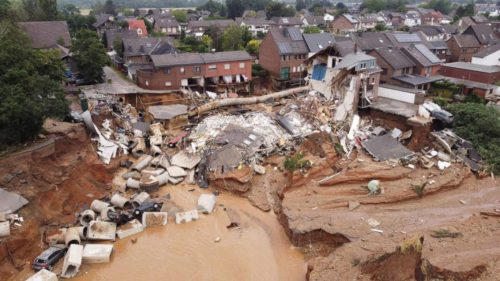
A series of showers and floods occurred in just one month in Czech Republic, Romania, France, and Luxembourg. The same thing happened in Asia. Heavy rains fell on the Chinese province of Henan. According to the latest data, they took the lives of 33 people. Rescuers evacuated 376 thousand people. They did not forget about the animals. Workers rescued pets in all ways: carried on their backs, drifting objects, and just on human hands.

In late July, floods and landslides in the Indian state of Maharashtra killed about 200 people. More than 30 houses were underground. Due to bad weather in the region, there were problems with mobile communications and transport accessibility. In some areas, the water level rose by 3.5 meters.
So, where is the connection?
Scientists link floods as well as abnormal heat in Canada and the United States. Due to the unprecedented high temperatures in California, forests were burning this summer, and the fire was spreading to homes, depriving hundreds of people of housing. The small town of Lytton, which has the highest temperature in Canada in the history of meteorological observations (49.6° C), almost completely burned down. The reason for this is a weather phenomenon called a thermal dome. It is a fixed area of high atmospheric pressure that stretches from California to the Arctic territories of Canada. David Phillips, a senior climatologist with the Office of the Environment and Climate Change in Canada, says it’s unclear what caused the dome, but climate change appears to have contributed. The thermal dome captures heat and blocks the movement of other weather systems.
European leaders and scientists have stated that cataclysms can be caused by climate change and predict that we should expect similar weather conditions in the future:
“The downpours we’ve seen in Europe over the last few days are extreme weather conditions,” said Frederic Otto of the University of Oxford’s Institute for Environmental Change. “Their intensity has increased as a result of climate change.
“This is a new normality,” said Johannes Kwaas, a meteorologist at the University of Leipzig.
According to Johannes Kwaas, the observed events, including fires and floods, resulted from emissions released into the atmosphere decades ago. The total temperature of the Earth is rising, and already now, it has become higher by 1.2° C against the pre-industrial period, which began in the late XVIII century. The situation, according to Kwaas, will worsen, and even if we now significantly reduce the level of harmful emissions into the atmosphere, by the end of the century, the temperature on Earth will rise by another 0,3° C, 0,8° C – this, according to Kwaas, cannot be avoided.
According to the hydrometeorologist, it is impossible to say that what is happening is directly related only to global warming. However, he states the connection between the increase in atmospheric temperature and the amount of moisture contained in it, therefore the precipitation amount. There is a certain relationship with industrialization because pollutants in the air and aerosols are involved in forming clouds and contribute to their appearance. Still, we cannot say that the pollution itself caused such consequences.
What shall we do?
But we can influence these changes if we follow the strategy of achieving carbon neutrality, according to which countries, which account for more than 65% of global greenhouse gas emissions and more than 70% of the world economy, will commit to ensuring zero emissions to the middle of the current century.
From 2000 to 2018, floods have already affected, according to various estimates, from 255 to 290 million people living on 2.23 million square kilometers. It would seem that if the climate changes and the area becomes more life-threatening, because at any moment you can be homeless or even die, it should provoke a gradual migration of people from such places. But a study by scientists at Columbia University on Earth, published in Nature magazine, surprisingly suggests the opposite: more dangerous areas will become densely populated due to demographic change. The number of people at risk of flooding will grow by 20-24% by 2030. Scientists explain this paradox by the fact that in places affected by water, the cost of land is falling, and people are rapidly inhabiting the recently flooded areas. Statistics confirm this: in areas where floods are most common, the population grew by 34% from 2000 to 2015, while global growth was only 18%. That is, now about 56-58 million people live in areas where a catastrophic flood could occur at any time.
But the crisis is provoking development. Living in such areas should ultimately lead to economic growth, strange as this statement may seem. The forecasts published by the Institute for Environmental Studies in the Netherlands, based on a wide range of scenarios for climate change and socio-economic development, demonstrate that enhanced adaptation measures can significantly contain the damage from future floods. The researchers found that per capita income growth coincided with a global decline in vulnerability to flooding between 1980 and 2010. This is reflected in a reduction in mortality and loss of population and gross domestic product.
Many ideas have been proposed to save the area from flooding, including restoring wetlands and strengthening beaches, which effectively reduce the likelihood of floods. For example, in coastal cities, it was proposed to build dams and barriers.
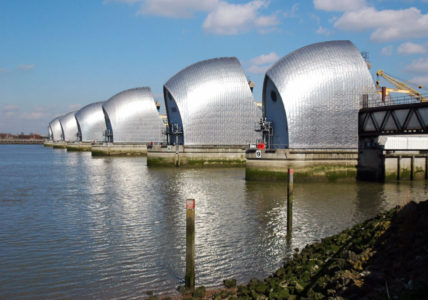
One of these was built on the Thames in 1984 to prevent the massive flooding that London has experienced for centuries. The threat has increased over time due to the slow but steady increase in flood levels and the slow “subsidence” of the UK to 5 cm in 100 years, caused by the postglacial recovery. In 1928, the Thames flood claimed the lives of 14 people and killed 307 people after the 1953 flood. Before that, 340 square kilometers of land with half a million buildings and nearly a hundred railway stations were at risk. 1.25 million people lived here. Designed by Charles Reginald Draper back in 1950, the barrier solved this problem. Futuristic shiny structures block the river with a width of 520 meters and divide the stream into four sections of 61 meters and two navigable spans of 30 meters. In these openings, steel turning segments that usually lie at the river’s bottom are established. If necessary, the segments weighing 3700 tons are synchronously rotated by 90 degrees, reliably blocking the flow. Since 1984, the threat of flooding in London has disappeared. In the first five years, construction was used only four times. But in 2001 it had to be raised 15 times, in 2003 – 19 times, in 2007 – 11 times. It is estimated that by 2050 the protective structure will be turned on up to 75 times a year.
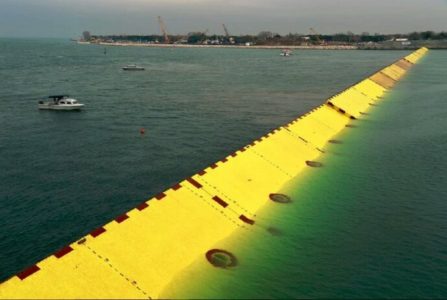
Last year, St. Mark’s Square in Venice remained dry for the first time during heavy rains, all thanks to the new dam system “Moses” or MOSE. As soon as it became known about the possibility of flooding the city, 78 protective barriers were raised at the mouth of the port of the Venetian Lagoon in 1 hour and 17 minutes, thanks to which floods were avoided.
However, some of these large-scale engineering structures have repeatedly been criticized for being expensive: the cost of building the Thames barrier was £534 million and another £100 million for river work (a total of €745 million); The MOSE system was constructed for €5.5 billion, from which it can be concluded that in 30 years between the construction of the Thames and Moses barrier, technology has become much more expensive.
Also, these systems can harm the environment in cases where a person changes the riverbed and disturbs the ecosystem. Other measures, such as reducing vulnerability and vulnerability, such as zoning rules and building regulations, can significantly reduce flood damage and lead to lower investment costs. Still, they do not prevent floodwaters from entering the city but only help prevent more consequences.
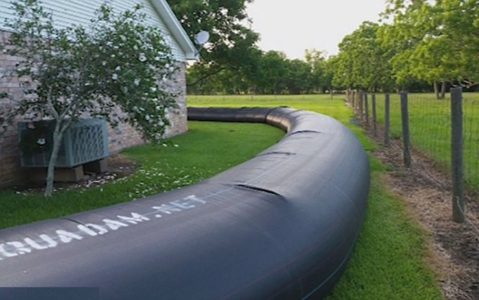
Such measures include more local ways to prevent the effects of floods. One of them was invented by Randy Wagner from Texas. Upon learning of the threat of flooding, he bought a 120-meter-long plastic pipe that lined his house. Neighbors twisted their temples when they learned that Randy had spent $8,300 on such reinforcement but regretted not doing the same when Wagner’s house was the only one unharmed after the flood. Potentially, the damage caused by the natural disaster could amount to about $150 thousand.

Such buildings have recently become more popular and sold in France. They are installed on the streets and near buildings at risk of flooding.
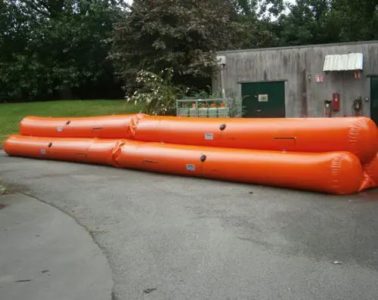

Another design is an automatic barrier that works on the principle of the Thames barrier, which was invented in Italy. In case of a sudden influx of water rises, the hydraulic system blocks the path of water. They are installed at the junction of canals with rivers and even on beaches and promenades. Of course, they will not save the whole city together and will not be a global solution to the problem, but may in some cases protect residential, industrial, commercial, storage facilities, garages, underground facilities, rivers, and port platforms.
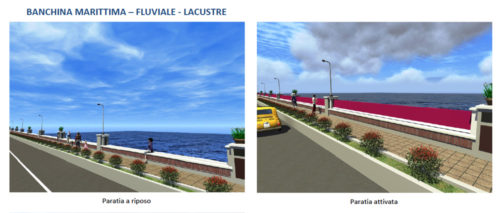
One way or another, the summer events that happened worldwide immediately were written on the pages of history and cannot go unnoticed. We will have to stock up on barriers, build new dams and adapt to new living conditions, and at the same time try to reduce the anthropological impact on the environment. Fortunately, scientific and technological progress allows us to do this.
***
Without help for oil-producing countries, net-zero by 2050 is a distant dream. To meet climate targets and avoid economic collapse, countries like Iraq need international support in the transition to clean energy – you may read more here.



